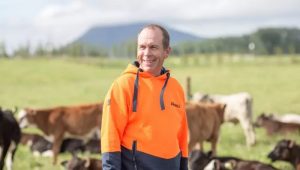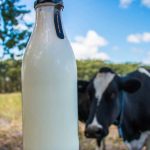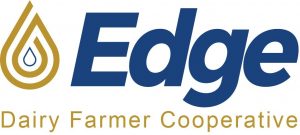
The groups said during a press conference Apr. 27 that this proposal would create a more equitable market across the board for the nation’s dairy farmers. The plan comes after negative producer price differentials, or PPDs, reached record lows during the economic crisis of the pandemic and affected many dairy farmers’ bottom lines. Class III Plus aims to fix those holes in the system for more crisis preparedness.
“(The) Class III Plus proposal provides for long-term reduction in the likelihood of negative PPDs and would create more pricing stability in the future,” said Lucas Sjostrom, Minnesota Milk executive director. “Tying the Class I price to the Class III price will also make it less likely that cheese plants will find it necessary to depool, which was another source of the pricing challenges we started facing last year in 2020.”
The groups consider the plan to be an answer to short- and long-term concerns as they claim it’s neutral in price adjustment. The Class III price would become the mover for the Class I price, plus a 36-cent adjustment, to create a more linear relationship. The groups added that there would be an annual readjustment based on market analysis, and it would also end advance pricing, which heavily contributed to cooperative depooling and negative PPDs. Many group representatives said the plan is forward-thinking.
“Our proposal does a really good job at eliminating the negative PPDs and basically eliminating the volatility of the milk price,” said Kris Bousquet, executive director of NSDA. “We’re really proud of how our proposal does that and excited to champion it moving forward.”
The announcement of this plan comes shortly after the National Milk Producers Federation requested an emergency hearing from the US Department of Agriculture regarding the Class I fluid milk price mover. That proposal looks to recover lost income – an estimated total of $725 million – and create a fairer pricing environment for dairy farmers. John Holevoet, director of government affairs for DBA, said that due to this news, his own organization may move forward with a hearing request sooner than anticipated.
Like the Class III Plan, the original Class I price mover that was established through the 2018 Farm Bill was intended to be revenue-neutral, but with a crisis the size of the COVID-19 pandemic, market volatility skyrocketed to unprecedented levels, prompting many in the dairy industry to rethink existing processes.
“We feel it’s critical that any such reform … provides stability to the pricing system without distorting the market … reduces the likelihood of negative producer price differentials and makes producer risk management more effective in future crises,” DBA president Amy Penterman said. “The NMPF proposal says none of these things.”
Holevoet said neither his organization nor the other organizations involved in the proposal have been in contact with NMPF. Kris Bousquet, executive director of NSDA, said he believes the emergency hearing, if it happens, could lead to the end of the Federal Milk Marketing Order system as a whole.
“Having that FMMO hearing is not a decision that we need to take lightly. The hearing itself has some inherent consequences, and it could result in some counterproductive changes, or even the end of the FMMO system altogether,” Bousquet said. “We should make lasting and beneficial changes that will leave us with a better system overall.”
Penterman said she wants to hear feedback from farmers not just in Wisconsin, but all over, so they can find the weak spots in their proposal and improve them for long-term stability and equity. Sjostrom said they also received input from many economists before going public with the proposal, and he feels very confident that the current proposal will not be much different than the final proposal.
“We did do some homework and tried to figure out what major goals we have,” Sjolstrom said. “We analyzed it and studied it. I’m sure one of our major issues or major things to compare against was the proposal for NMPF, so that’s really what moved us forward faster. We’re always open to something that betters the situation.”
Holevoet said another advantage of the plan is that the relative price stability will help farmers to use risk management tools more effectively rather than just going in blind. He said after analysis of what happened to the markets in 2020, many negative PPDs were directly tied back to advance prices, which the Class III Plus proposal wants to eliminate. However, there would still be reported prices like with any other commodity, he said.
Sjostrom added that they want to be sensitive to non-Class III markets as well by being price neutral and not offering any advantage to one class over the other. He said the overall goal is to improve the price discovery mechanism across the board and dairy farmers from regions other than the Midwest should offer their input, especially those whose milk markets aren’t heavily concentrated around Class III.
“We’ll continue to monitor if and when an official request is made by NMPF to USDA for a hearing, then we’ll decide if and when we have to engage with that process,” Holevoet said. “But in the meantime it is about having those conversations with our counterparts in other states and other regions, those folks on the processing side as well as on the farming side. All that work lies ahead of us.”

























